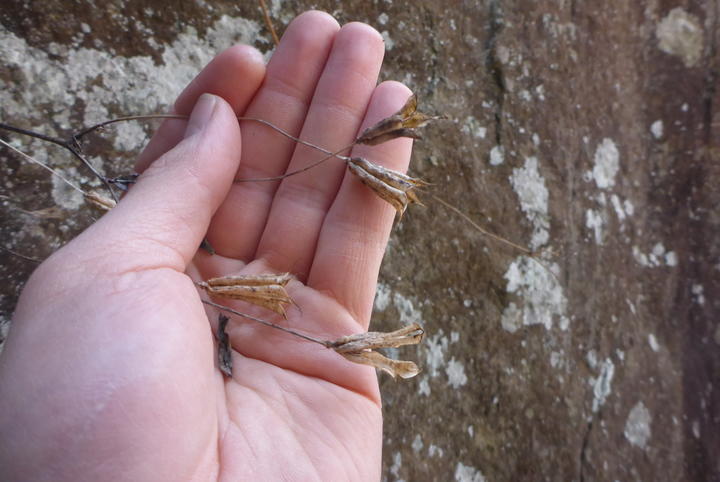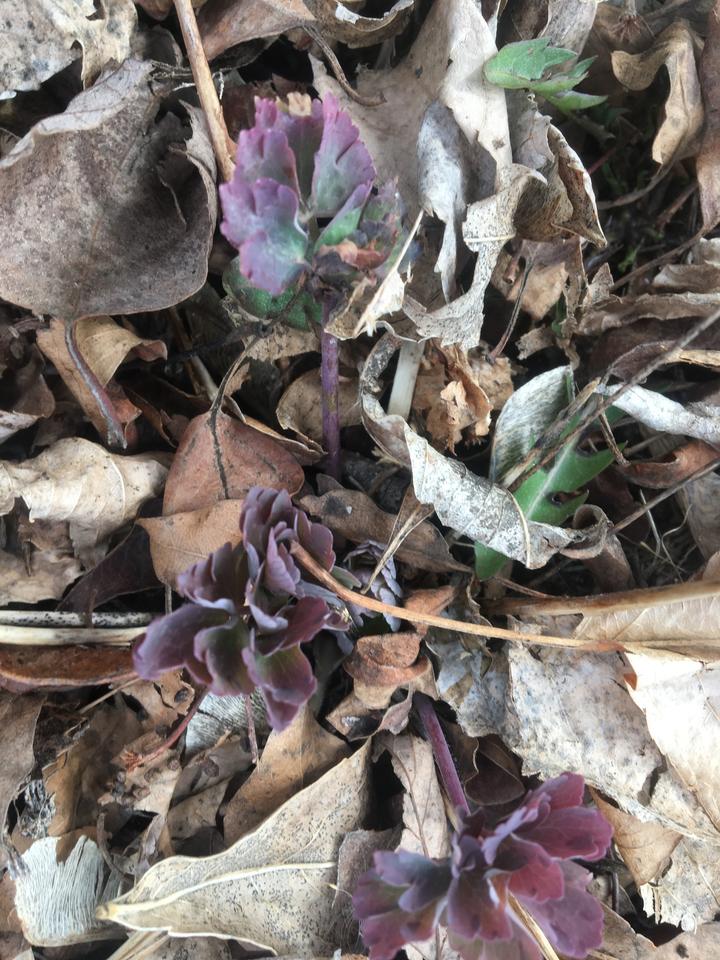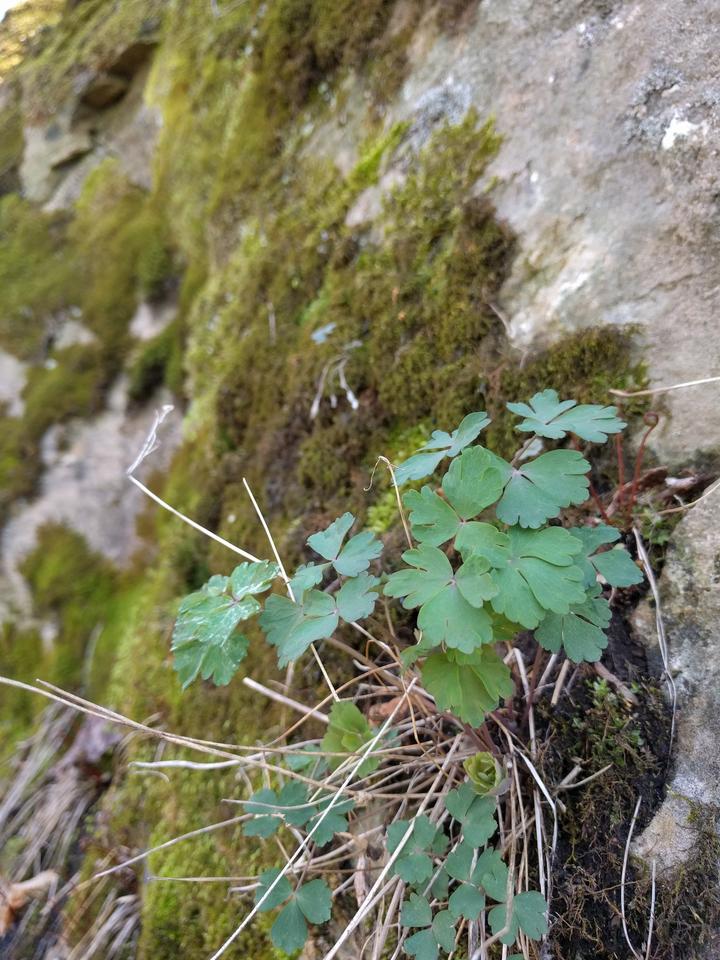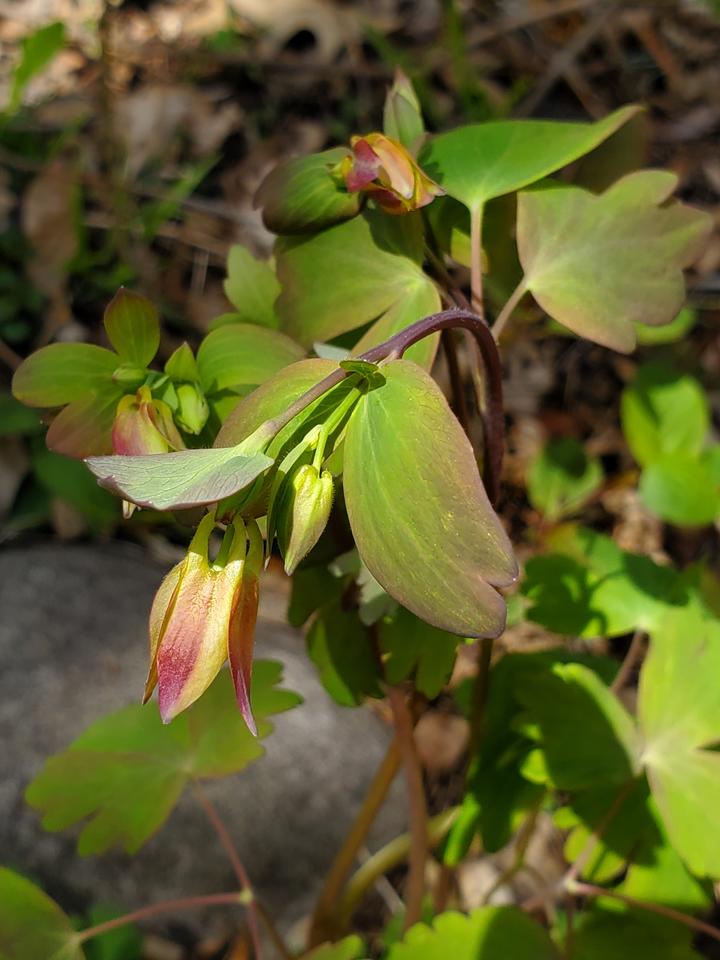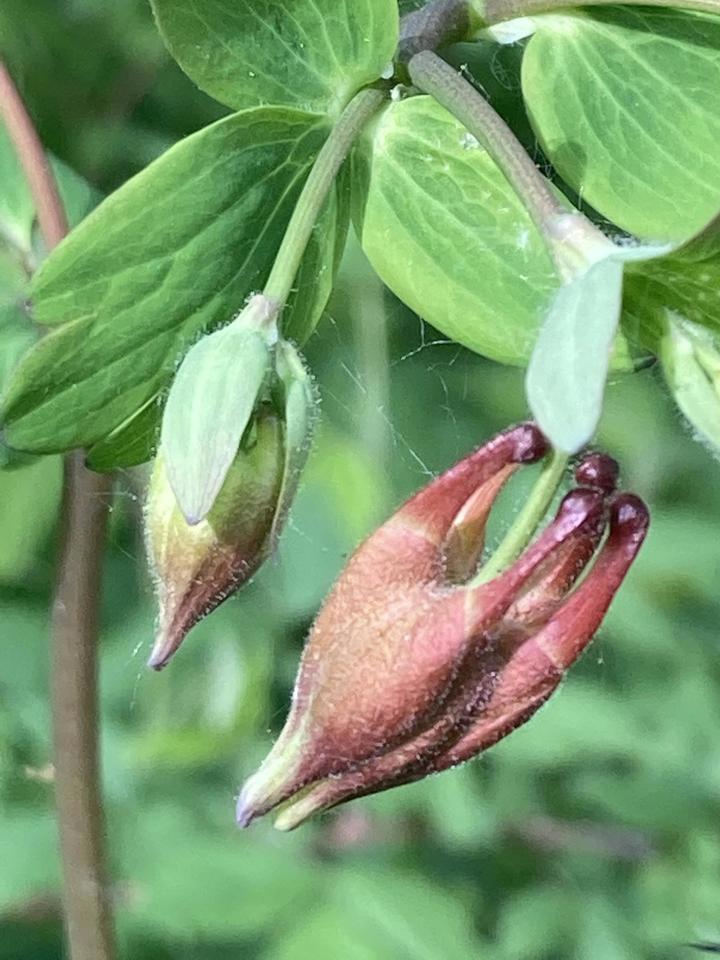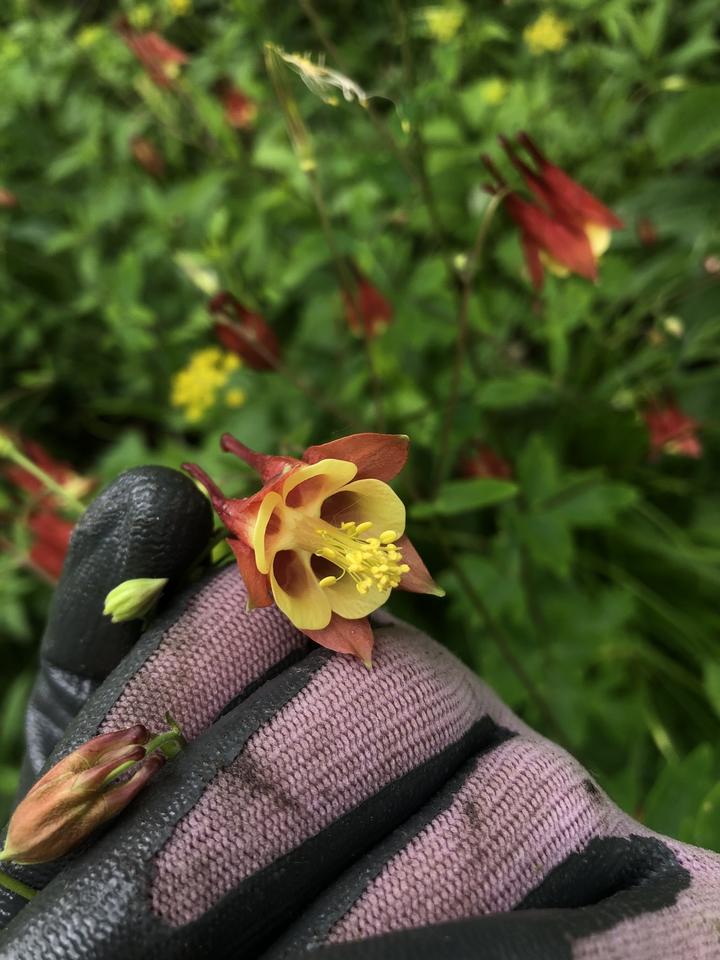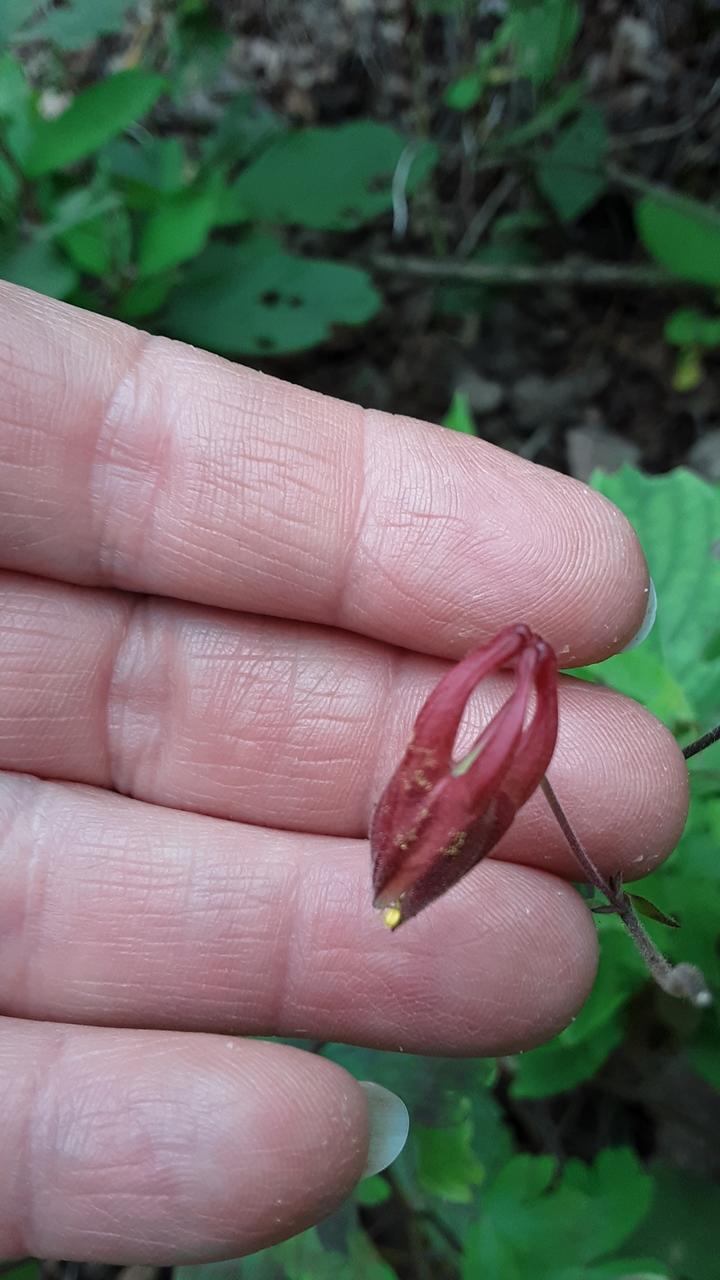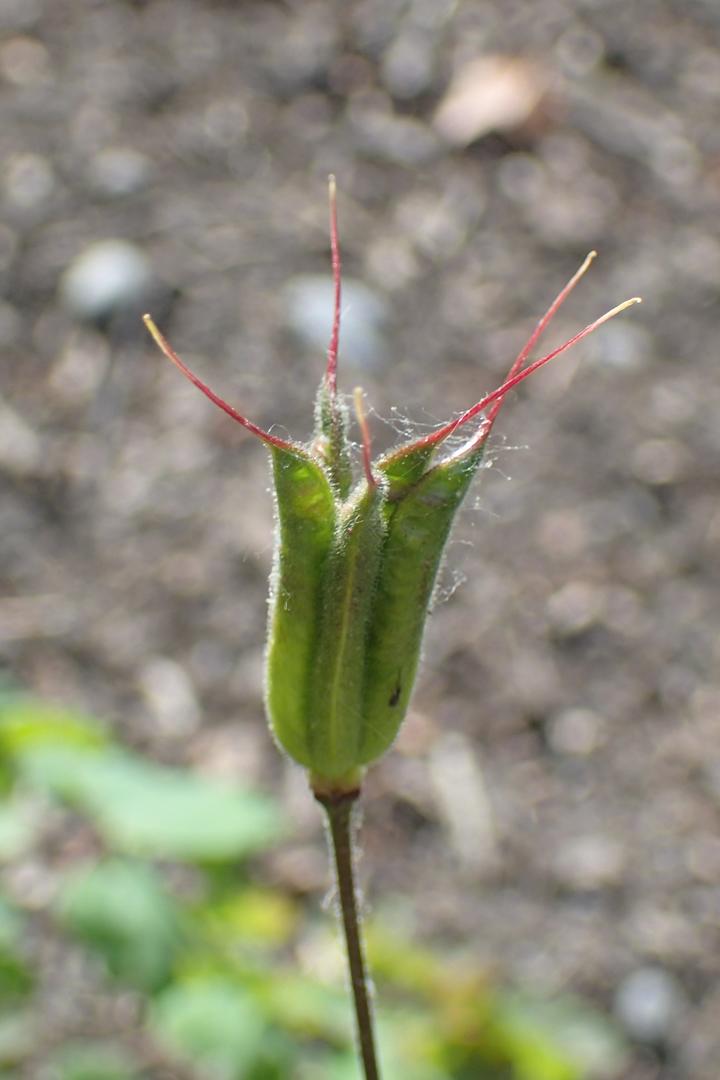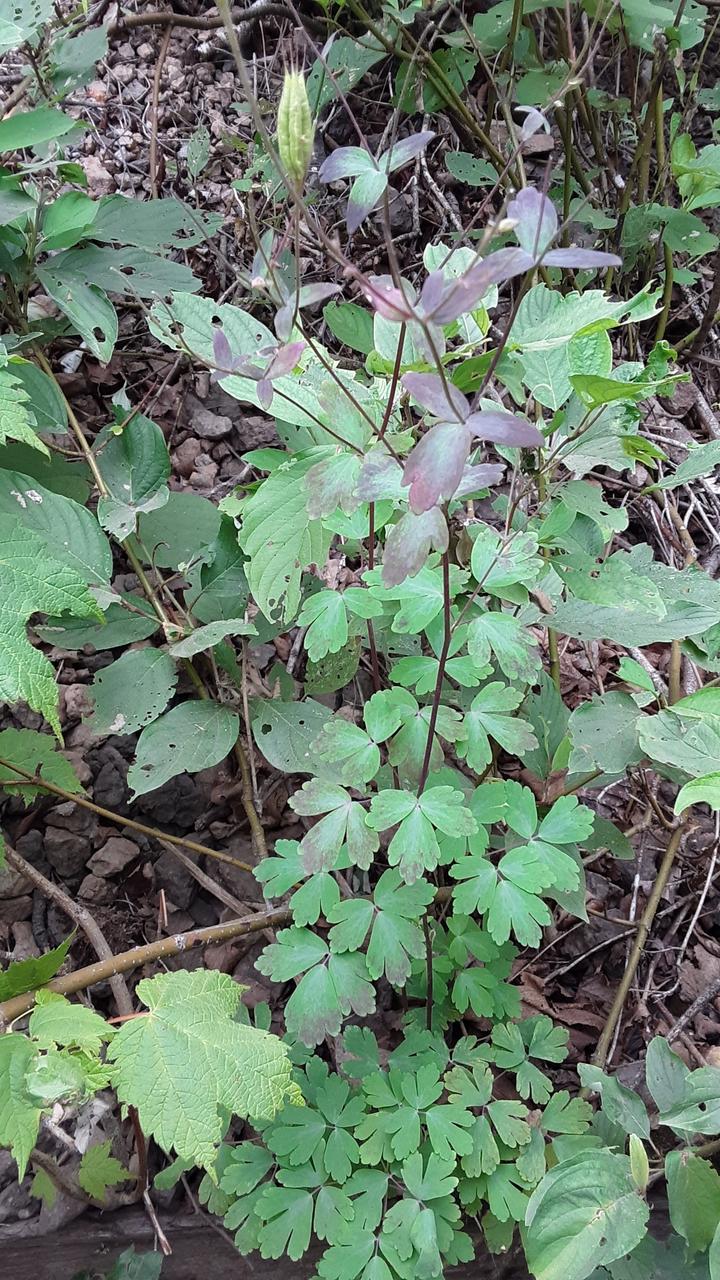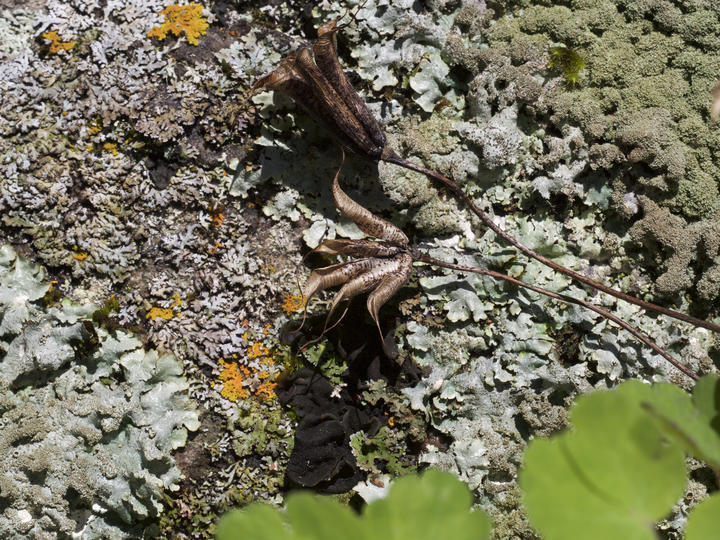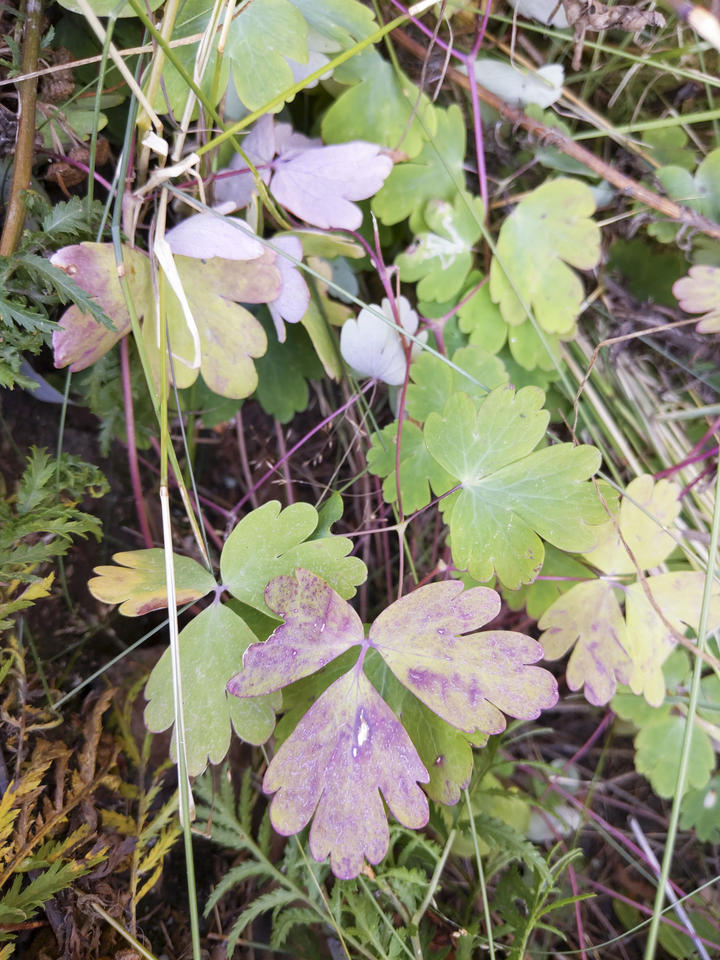More names for this plant
The Dakota and Anishinaabe were among the earliest people to name Minnesota’s plants and animals, as well as to understand them in relation to Minnesota’s climate and seasons. Those original names are still in use, and several are included on the Season Watch website. However, complete translations were not available.
Latin (or scientific name): Aquilegia canadensis
The scientific community has a convention of assigning agreed-upon Latin names to every kind of organism. Using scientific names helps people communicate confidently about the same organism and organize lifeforms based on how closely related they are.
More common names: Canada columbine, columbine, wild columbine
Page contents
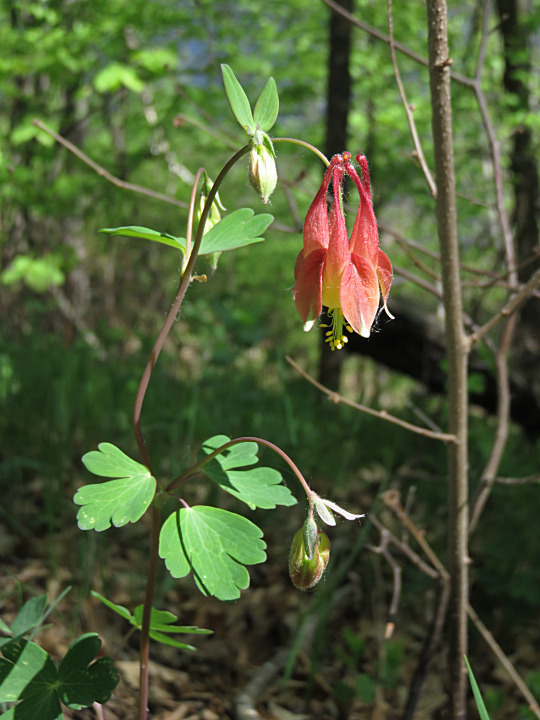
May 20, 2018, Pine County, Minnesota
Photo © eknuth, some rights reserved (CC-BY-NC)
iNaturalist observation
About red columbine
- Red columbine is a herbaceous plant native to most areas of Minnesota. It grows one to three feet tall and has leaves that are made up of three lobed leaflets.
- This plant usually lives three to five years and produces flowers after its first year.
- Its red and yellow flowers are produced in May to July.
- The flowers contain nectar that is collected by pollinators, specifically hummingbirds and bumble bees.
Visual guide to phenology
Watch for the appearance of leaves, flowers, and fruits. Take notice of when flowers open and fruits ripen.
Note to observers
This page explains general clues to watch for when observing red columbine phenology. However, this page does not explain how to identify this plant or collect data in a standardized way.
- For help with identification, see Minnesota Wildflowers.
- For guidance on collecting data, see Nature’s Notebook.
Graphs and historical data
Note: The Orientation Center provides a map, as well as information on reading graphs; interpreting summary statistics, who collected the data and how; and how to download datasets for independent exploration.
Flowering
- Earliest: May 14 (occurred in 2005)
- Average: May 26
- Latest: June 9 (occurred in 2002 and 2013)
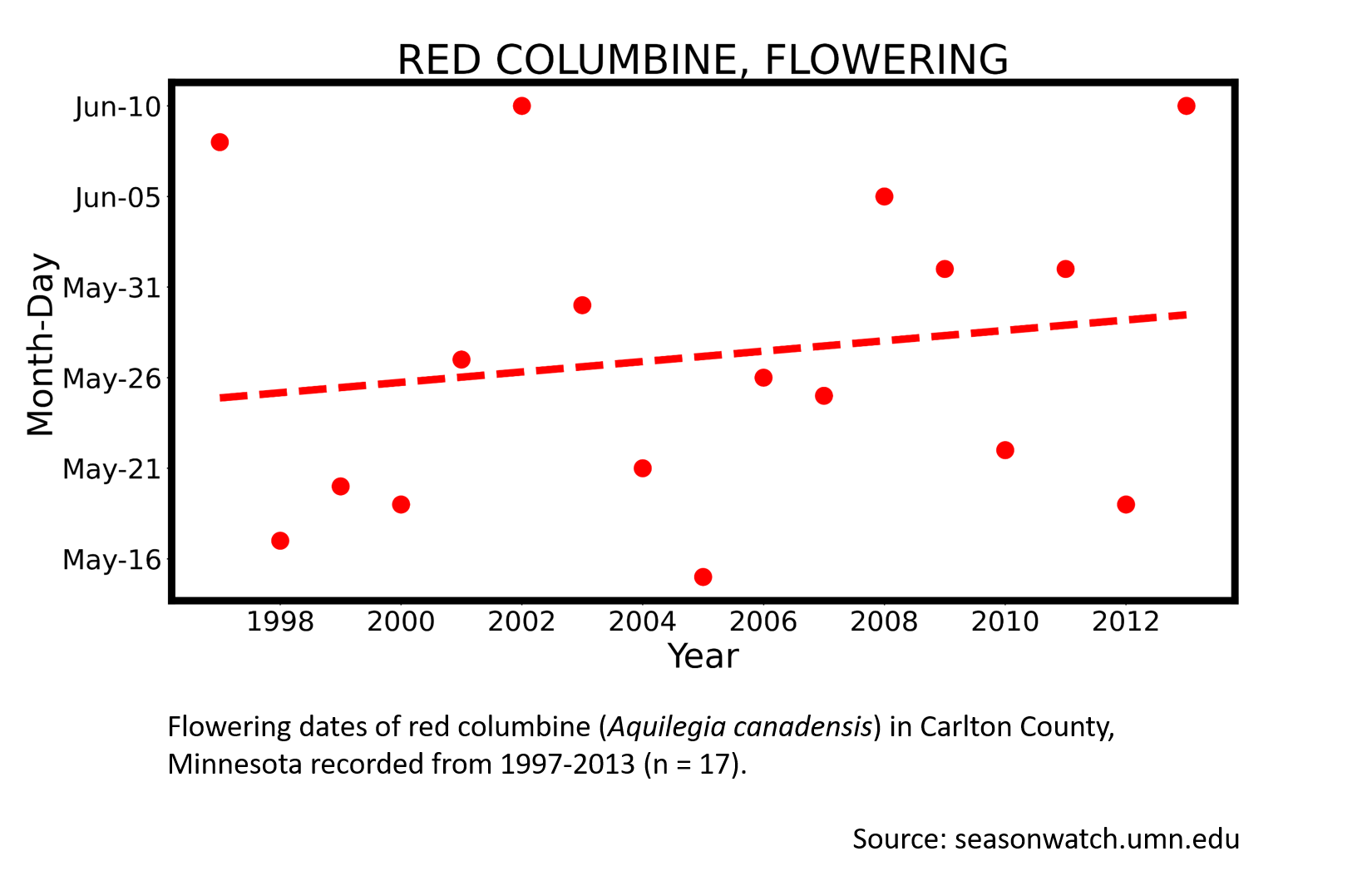
Flowering
- Earliest: April 26 (occurred in 1987)
- Average: May 14
- Latest: May 25 (occurred in 1983)
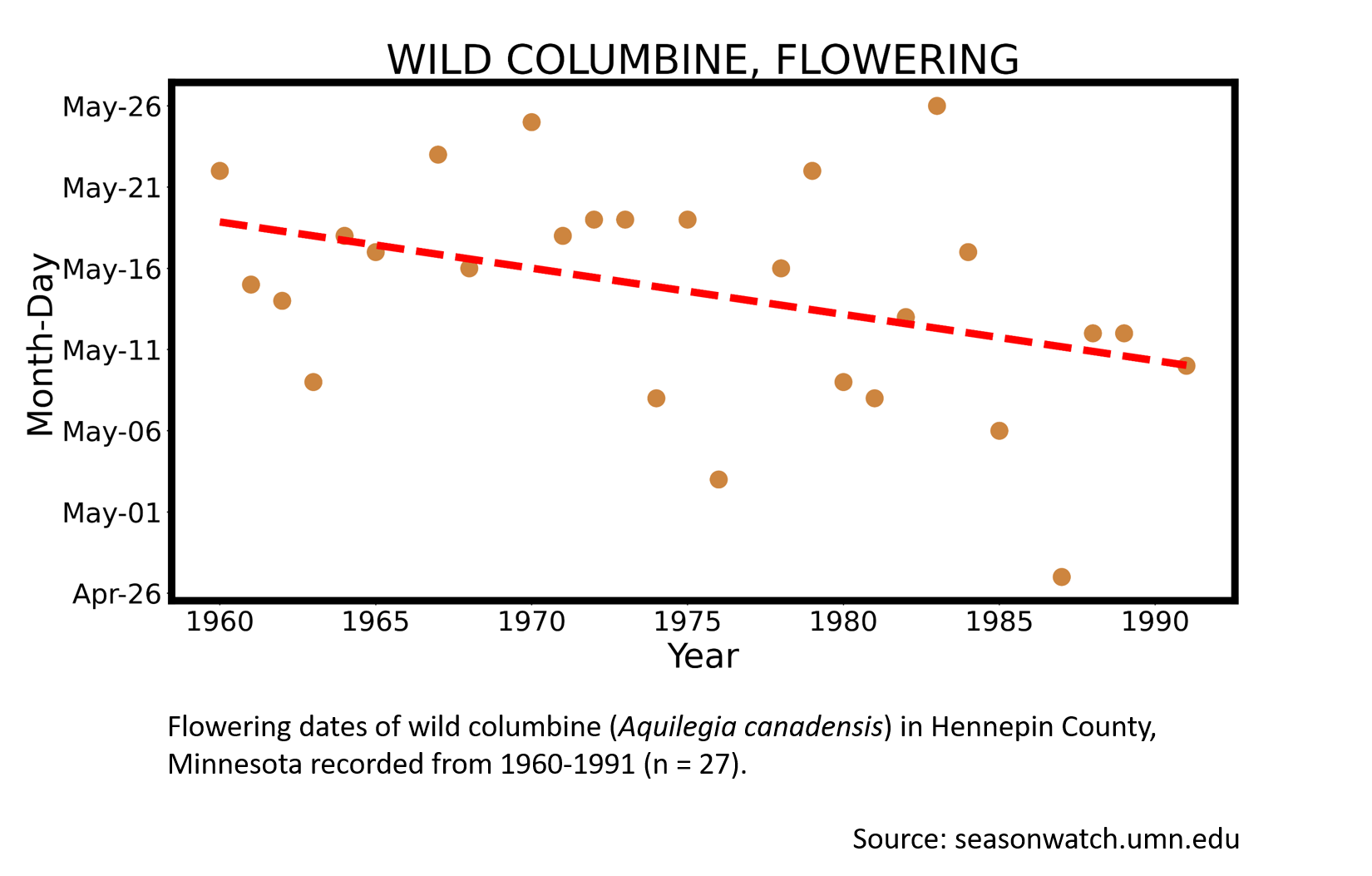
Last flower
- Earliest: June 1 (occurred in 1982)
- Average: June 24
- Latest: July 18 (occurred in 1963)
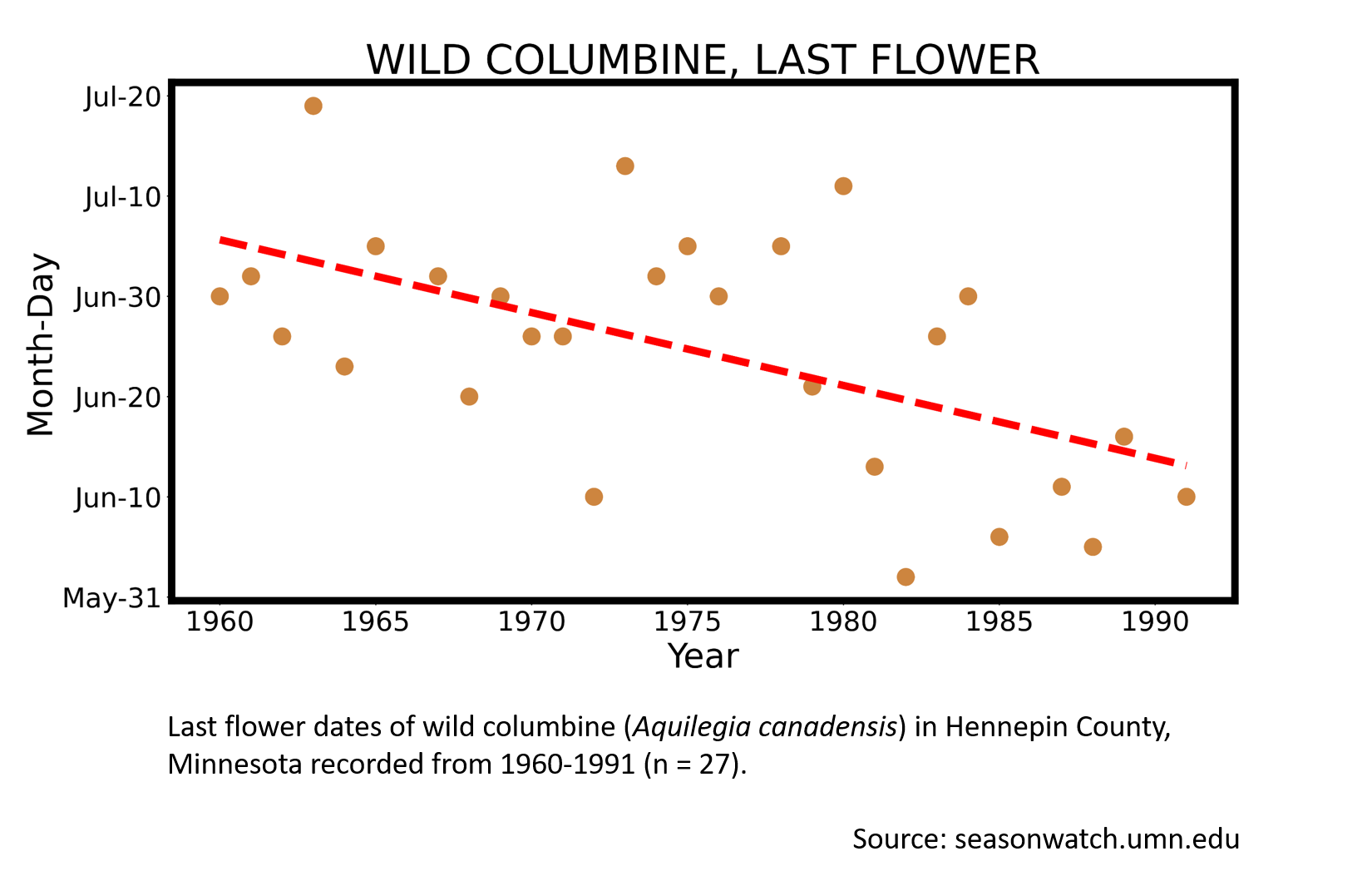
Flowering
- Earliest: May 11 (occurred in 1987)
- Average: May 26
- Latest: June 17 (occurred in 2013)
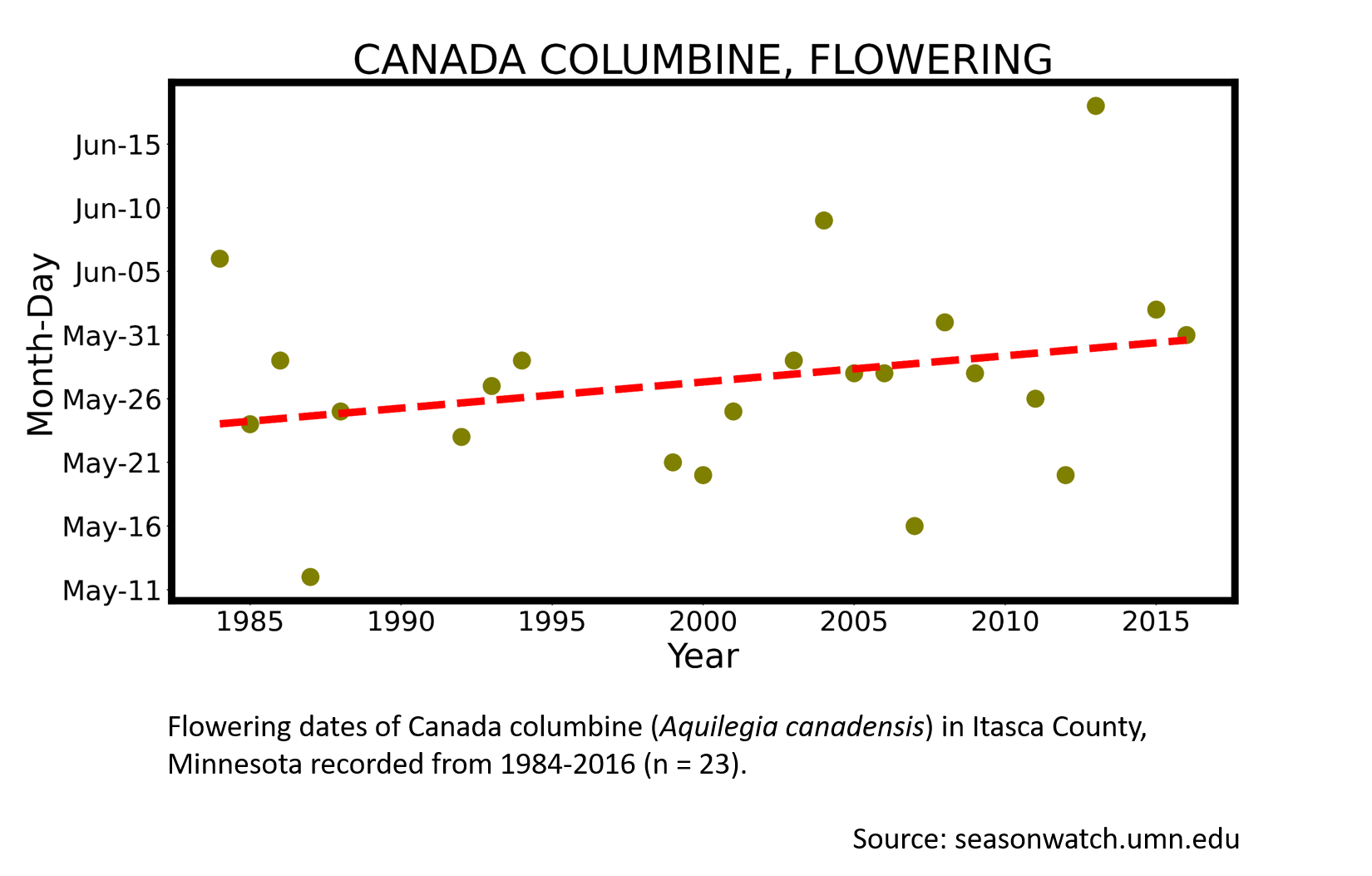
More resources
Keep exploring Season Watch
Keep exploring Season Watch
Co-author: Lynsey Nass, Minnesota Master Naturalist
